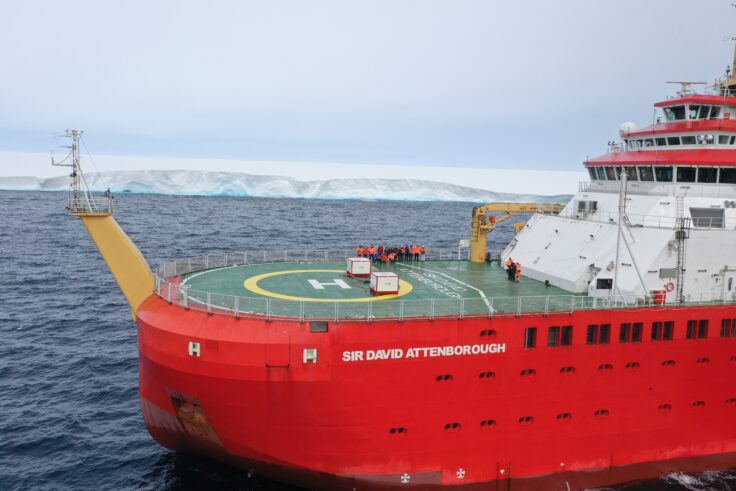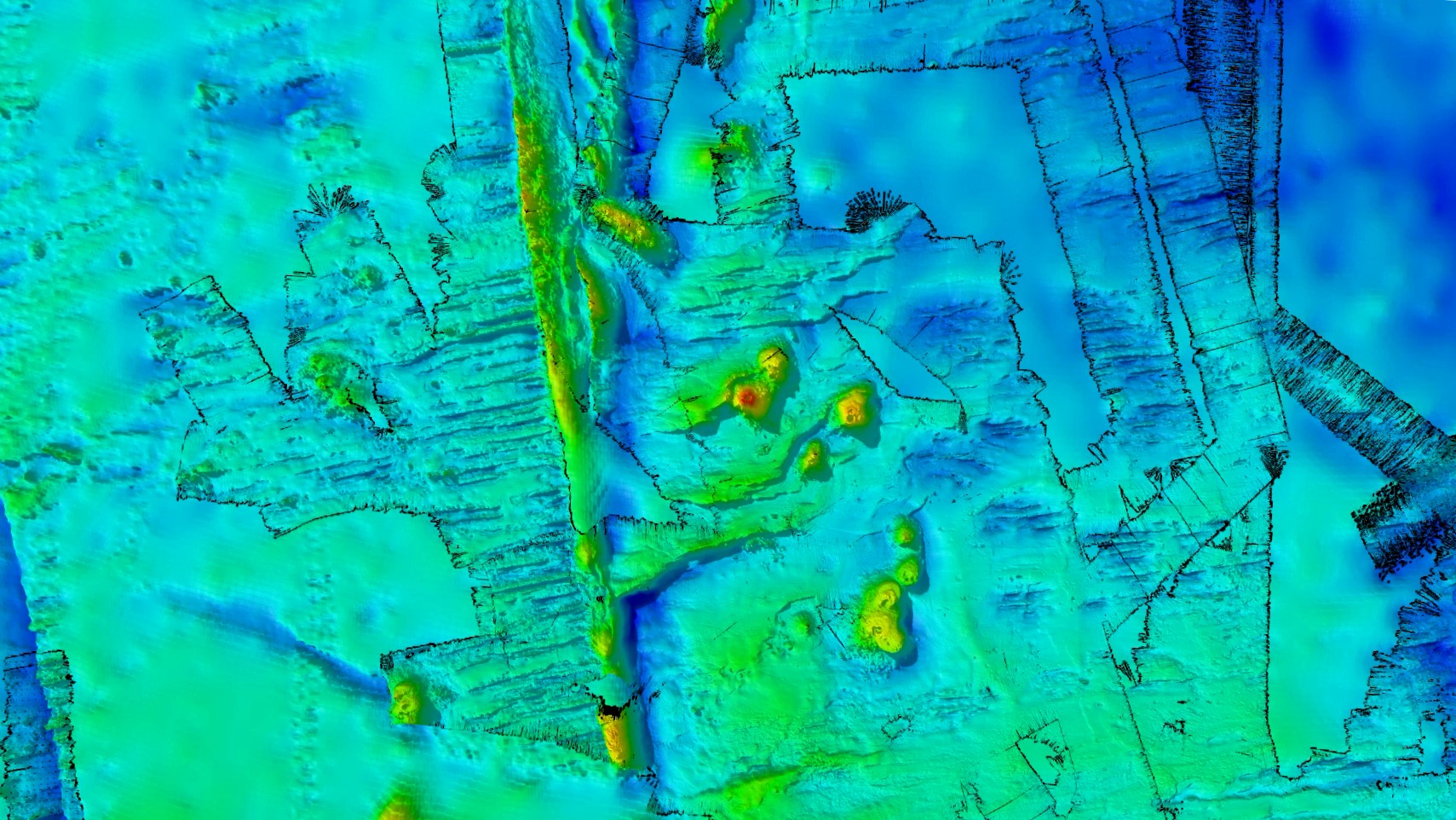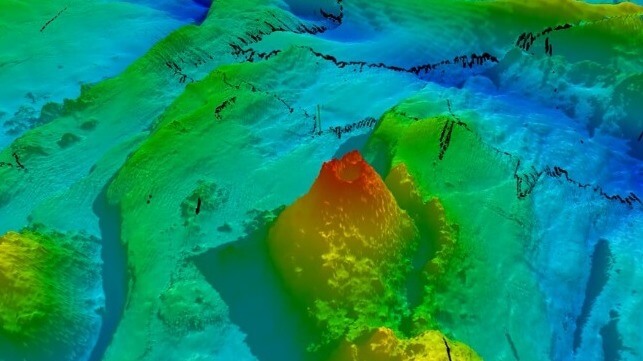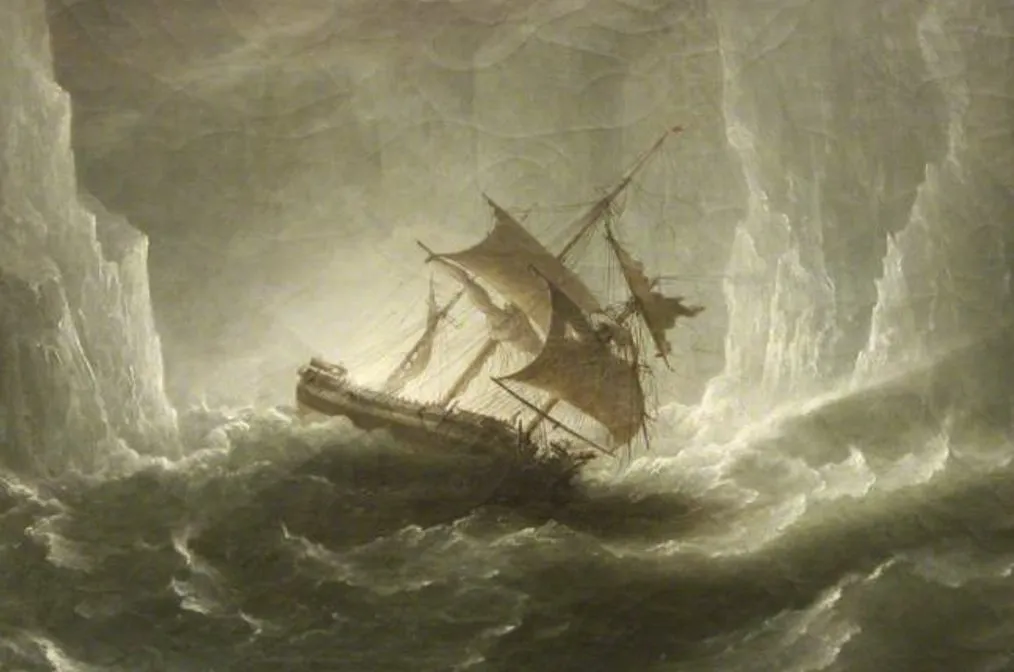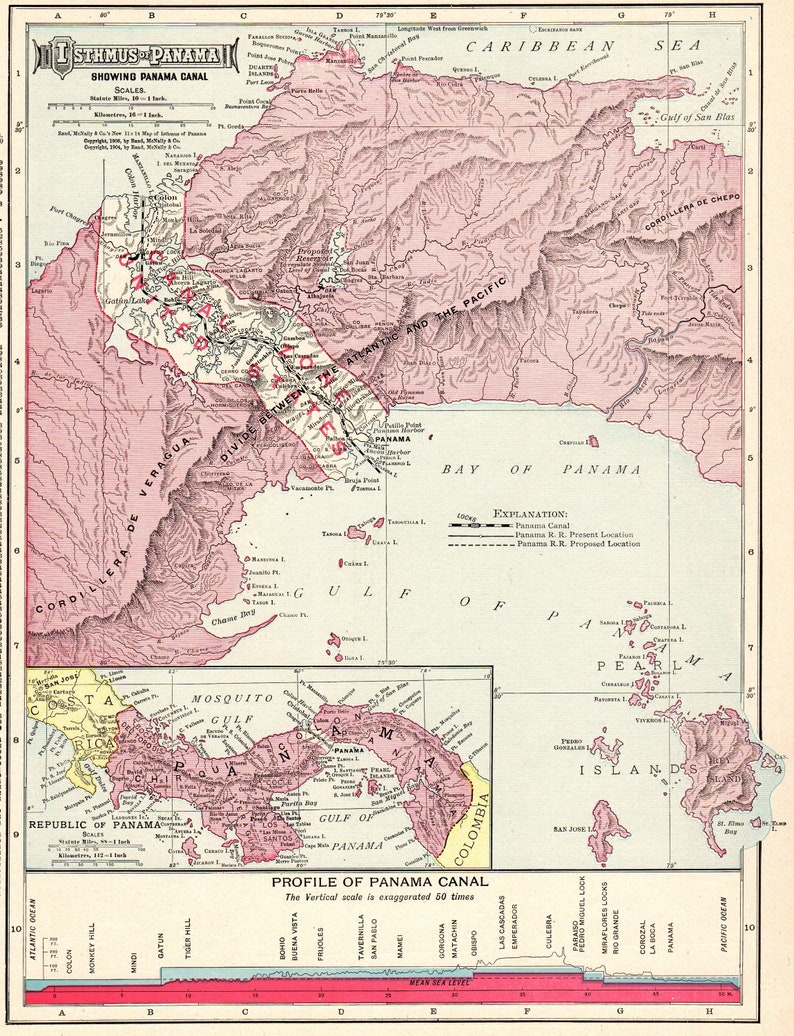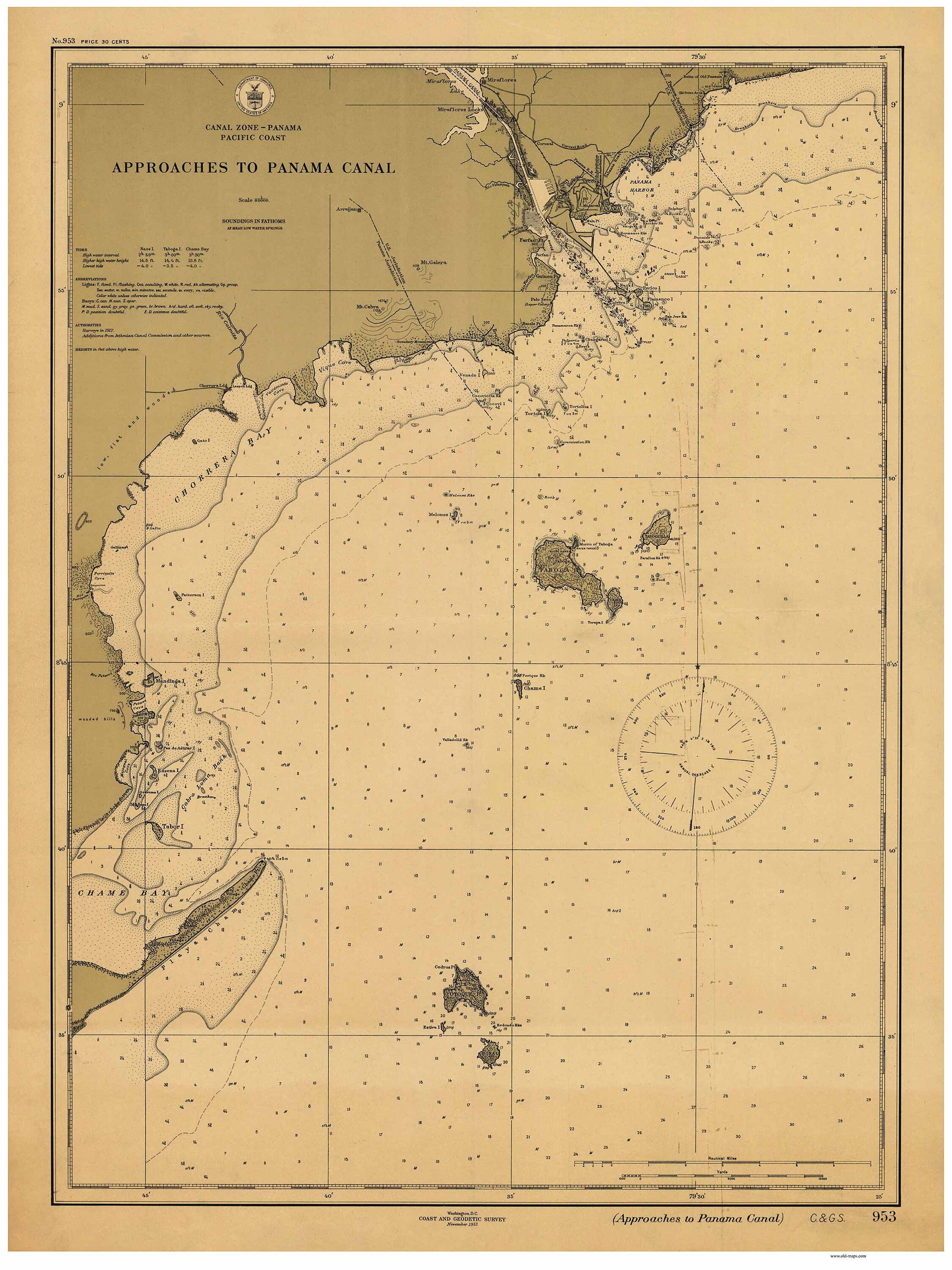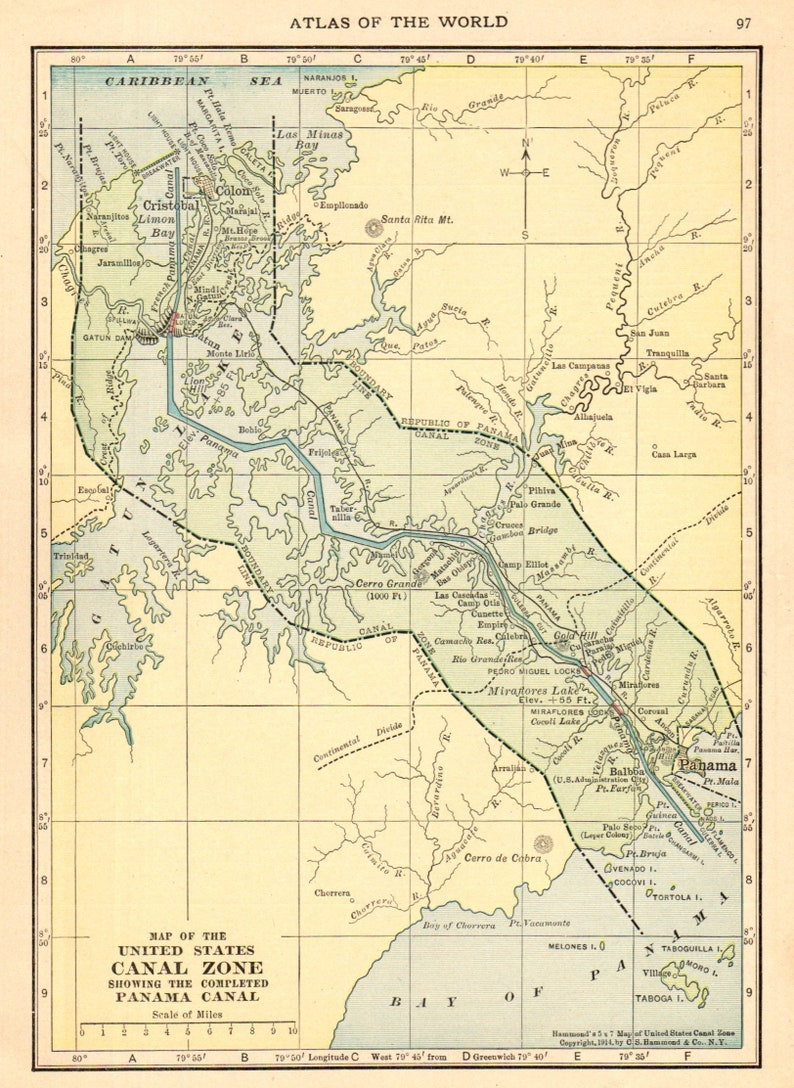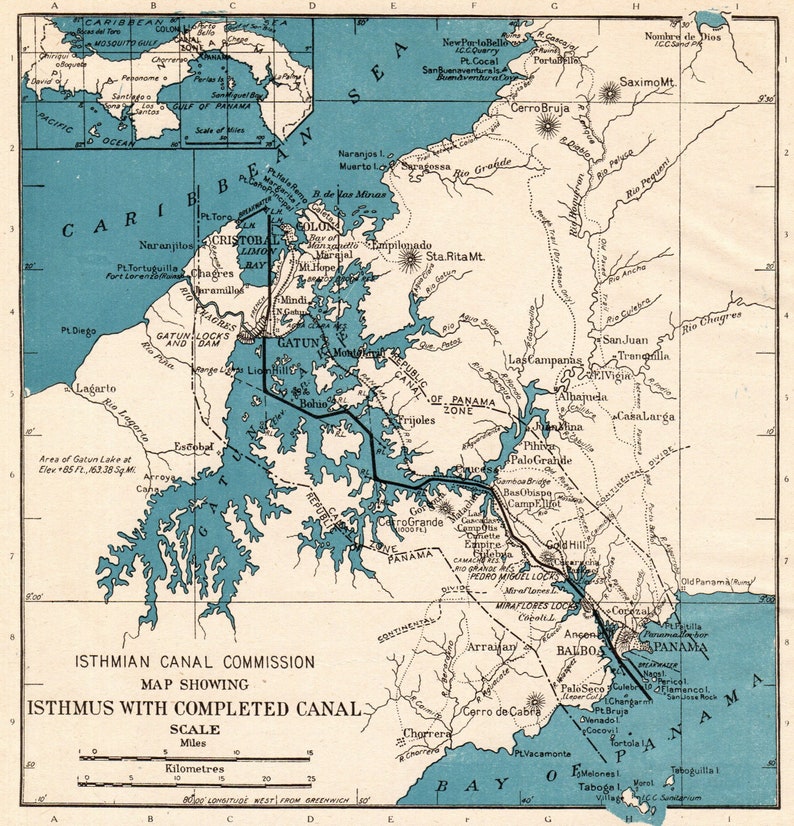You
may not need to rely on ancient navigation skills, but they can enrich
your sailing, and enhance your sense of when something isn’t right, says
William Thomson
Yacht navigation can be defined as knowing which way to go.
This sounds simple, but to do it you need to process three complex pieces of information.
Firstly, you need to know where you are.
Secondly, you need to know where your destination is.
Thirdly, you need to be aware of the hazards lie between you and your destination.
Computing this information is no easy feat, but luckily for modern sailors the world’s greatest minds have spent the past several thousands of years making it easier for us, culminating in the technological wonders many of us carry aboard today.
Most modern boats have several units giving your precise latitude and longitude; aboard my catamaran Luna we have an Icom IC-M506 radio with in-built GPS, an Iridium Go! and an iPhone.
That’s the position sorted.
As for the destination and hazards, we have chartplotters, paper charts, pilot books (both paper and digital) and navigation apps.
With all this information
to hand, all we need to do is push a button on the autopilot and the boat practically navigates itself.
What do you do then? Watch the birds fly past, the clouds scuttle along the horizon, the sun arc across the sky to cast a golden light over the waves as dusk falls and the stars light up the night in a dazzling array of light.
While these natural elements shape the beauty of the environment we sail in, they have another benefit, one of great value that few people make use of – they can help you navigate.
Ancient navigators were experts at reading clouds.
Photo: William Thomson
I have long been fascinated in natural navigation, a lifelong passion that took me to Tahiti last year.
Why there? Because it was in Polynesia that, thousands of years ago, ancient seafarers ventured out into the vast Pacific Ocean in canoes made from stone-age tools, using nothing but the stars, swell, birds and clouds to guide them.
If that wasn’t miraculous enough, they then charted hundreds of islands over an area of water larger than the continental United States, using no tools or instruments.
The purpose of my Polynesia trip was to learn how they achieved these feats and explore if their skills could be used alongside high-tech systems on modern boats to enhance our sailing navigation.
This article shares what I discovered.
It’s unlikely that using the techniques outlined below will ever be your sole source of position finding (though you never know), but as every good navigator knows, you should never rely on a single source of information alone.
It’s often something ‘not feeling right’ that alerts us to the fact that the GPS has gone on the blink, that the tide has pushed us further off course than we thought, or that the weather is brewing up something nasty despite a promising forecast.
Sailing at an angle to the swell, or noticing when the swell changes, can keep you on course.
Photo: Alamy Stock Photo
If nothing else, having a better understanding of the environment through which we’re sailing stops us being hypnotised by screens to be in the present moment and take in the beauty around us.
Yacht navigation using clouds
To the trained eye, clouds are like a neon sign hovering over an island or land mass, guiding you in from many miles away.
In perfect conditions, even a beginner can’t fail to notice cumulus piled up in an otherwise clear blue sky and it’s often the first clue of land many navigators experience when crossing the English Channel.
Clouds will tend to build on the windward side of an island and peter out to leeward.
Photo: William Thomson
The theory goes that as the land heats up faster than the sea by day, the hot air rises until it cools at altitude, condensing into cloud.
This means the cloud will hang directly above the island like a signpost.
The distance you first see the island depends on its altitude; a low-lying atoll or archipelago like the Isles of Scilly can only be seen at sea level from around 10-15 nautical miles, but the clouds above the island increases that distance by considerable margin.
If you’re heading towards a landfall in an area with strong cross-currents, the cloud can give you a quick and easy way to spot if your COG is taking you off track.
Simply set the autopilot on the bearing of where the island should be and keep track every so often to check whether you’re still pointing at the cloud.
I found this technique incredibly useful when sailing from Belle Isle to Île d’Yeu on France’s Biscay coast; an unusually strong ebb coming out of the Loire was pushing us off course more than I had accounted for.
Clouds forming over land are often visible long before the land itself.
Photo: William Thomson
Solitary cloud
With no visual sight of land in any direction it was impossible to get a sense of this, except for a solitary cloud hovering above Île d’Yeu telling us we were heading off course because we regularly needed to change our heading to stay on track.
This resulted in us steering further north than I had planned for, but sure enough, we ended up exactly where we needed to be thanks to the cloud.
This technique would be equally useful for double-checking your course to steer calculations when sailing out to the Scillies with the strong cross-currents off Land’s End.
On most days, it’s rarely a single cloud you’ll see.
More often than not, a 360º scan will reveal clouds of all shapes and sizes.
Which ones represent land? A key feature to look for is the movement of the cloud.
Generally speaking, most clouds at the same altitude will be moving roughly the same speed and direction, with the wind.
But the ones over land will have a sense of moving slower.
On the windward side of the island there will be an appearance of ‘piling up’ as new air flows over the island, while on the leeward side there will be a fizzling out effect as the air blows out to sea.
The volcano Stromboli.
Photo: Marcel Rabelo / Alamy Stock Photo
Direction and colours
While you’re scanning the clouds, if there are high altitude wispy cirrus you can also use these to get your bearings.
Study them over a period and note which direction they are travelling; in settled conditions they are likely to be continuing that way for several hours, giving you a guide to navigate by.
One quick tip for working out if a cloud is over land is to look at the colour of its underside, an observation that Polynesian navigators regularly employed.
The idea is that sunlight is reflected off a beach, lagoon or reef and creates a colour on the bottom of the cloud.
With this knowledge, they knew what type of island to expect before it even appeared in sight – this was especially useful when exploring new islands.
As a general rule, pink means there’s a reef, bright coloured means it’s a dry reef, whiter means there’s an expanse of sand, darker means there’s thick vegetation, and green means there’s a lagoon.
An island in the Tuamotus called Anna has such a vast lagoon that even when there are no clouds, the entire sky has a green tinge to it, leading a navigator into the sanctuary of its lagoon.
A very different type of cloud, but equally useful to navigators, is the type coming out of volcanoes.
While there are many of these in the Pacific, the Mediterranean is also a tectonic convergence zone.
Mount Etna in Sicily and the Italian island of Stromboli are perfect examples, with a regular stream of cloud coming from their summits.
Striking out across the tide to the low- lying Île d’Yeu, clouds can provide a reassuring reference.
Photo: Alamy Stock Photo
The air vapour resembles a pennant in the breeze, like smoke from a chimney, sharing another secondary piece of information to the tuned-in navigator by indicating the wind direction.
This flag-like effect is also clearly visible in Gibraltar, with the Levanter cloud streaming away to the west.
This happens anywhere moist air rises up a slope; I noticed it once off Rame Head near Plymouth Sound.
Yacht navigation using birds
In the tropics of the Pacific, Indian and Atlantic, birds are a navigator’s best friends, our eyes in the sky.
But not all birds are useful; the trick is to know which ones to look out for.
The four main types that are practical for navigation include the frigate-bird, the white tern, brown noddy and brown booby.
While each has its own unique behaviour, they share fundamental behaviours that can be of assistance; they (almost) always sleep on shore, flying out to sea at dawn and then returning to land at dusk.
Knowing this daily routine, by sailing in the direction birds have come from at sunrise, or following them at sunset, you can be confident you’re heading towards land.
A puffin heads home with food.
Alamy Stock Photo
Tern towards land
One exception to this rule is the white tern, during nesting season.
When they have chicks in the nest they fly out before dawn to catch fish, which they take to the nest before heading back out to sea at dawn.
Which months are nesting season? You don’t necessarily need to know; simply look at the mouth of the tern at dawn and see if they have a small fish horizontally across their mouths.
If they do, they’ll likely be heading towards land.
The same trick could be used for puffins in northern waters, though many immature puffins don’t return to land at all in their early years.
As with many things in natural navigation, a single clue could be an anomaly, but if you also notice ten noddies flying the opposite way, and a different shaped cloud in the direction the tern is flying, you can make an educated deduction.
As well as helping you find the direction of land, these four birds can also tell you how far you are from it.
This is because each type usually stays within a set distance from shore.
Frigate-birds are the furthest ranging, often soaring high up on the thermals 75 miles offshore.
Brown boobies are the next most adventurous, heading 30 miles out to sea.
Brown noddies and white terns rarely fly more than 20 miles from land, making them a clear indicator that you’re close.
Remember that their flight patterns are only of use at dawn and dusk; during the day they’re thinking of fish, not land.
Gannets on their migration north fly in formation across the English Channel.
Photo: Theo Stocker
In addition to the four diurnal seabirds, we can use migratory species to get our bearings; the Polynesians reputedly observed the long-tailed cuckoo, which migrates from Polynesia to New Zealand every September.
As a general rule, flocks of migratory birds in the northern hemisphere will fly south in the autumn to Africa, then return to northern Europe in the spring when things start heating up again.
Two types that follow this pattern are the gannet and the black-backed gull.
How do they do this? We don’t know exactly, but researchers have discovered that birds memorise iconic landmarks along the journey, use the earth’s magnetic field and even navigate by the stars.
Under pressure
Closer to home, seagulls can be especially useful for a navigator – but not for finding land.
Birds have a receptor in their ear called a vitali organ that makes them highly sensitive to changes in atmospheric pressure.
Birds can sense subtle changes long before we do, modifying their behaviour to prepare for bad weather.
Changes include eating more to compensate for the loss of feeding time during the storm, finding somewhere to take shelter and flying in tight circular flocks to adjust their sense of balance and direction in response to the changing air pressure.
If you notice these patterns, be prepared for wind and rain.
An added clue is that because the vitali organ makes birds so sensitive to atmospheric changes, when air pressure is falling they fly lower to relieve the discomfort because air is denser at sea level.
Orion is one of the best known constellations and provides a number of key navigation stars.
Photo: Richard Langdon
Yacht navigation using stars
Stars were the foundation of Polynesian navigation and you can use them to guide your night passages today.
In 2020 I wrote a series for this magazine exploring the basics of astro-navigation, but a new technique I learnt about on the Pacific trip was the use of horizon stars.
This is based on the principle that from your location, a star will always rise at exactly the same position.
It will then set at a mirror image (not reciprocal) bearing.
For example, if a star rises due east it will set due west, but if it rises north-east it will set north-west.
The exact bearing a star rises and sets depends on your latitude and the star’s declination (celestial latitude), but the easiest one to remember is Alnilam, the central star in Orion’s infamous belt.
Because Alnilam’s declination is 01º north, it rises and sets almost due east and west from anywhere in the world.
In contrast, Arcturus, with a declination of 19ºN, rises ENE and sets WNW.
Sirius, the brightest star in the sky, rises ESE and sets WSW because it’s declination is 17ºS.
A Polynesian navigation tool.
Photo: imageBROKER.com GmbH
Star tools
With 58 navigational stars, there will be one rising or setting on almost any cardinal point.
A great way to learn your constellations is with the SkyView Lite app; it’s free and by pointing your phone at the sky it shows you what star you are looking at.
For a list of the navigational stars and their co-ordinates, you can download a DIY Star Calculator at www.tide-school.com and it will also help you work out what time of year each star is best observed.
The Polynesians knew all this and used horizon stars to chart the Pacific, learning the bearings between islands in relation to where a star rose and set.
These days we have charts, and with a paper version you know the relative positions of nearby harbours.
So you can use the stars to help you hold a steady course rather than staring into the compass, to shape a course in the event of electrical malfunction, or just to test your skills.
Because winds and currents can take you off course, using the stars is not an exact science – but it doesn’t need to be.
Close to your destination clues start appearing, like birds, clouds and swell patterns, drawing you to shore like a magnet.
Most skippers will be aware of the boat’s motion over the waves.
When this changes it should sound alarm bells.
Photo: Richard Langdon
Yacht navigation using waves
There is a myth that Polynesians could navigate with their testicles.
This comes from the fact that they were so highly tuned to the motions of their vessels, noting minor changes and discerning valuable navigation information.
A fundamental technique was to feel the motion of the canoe at night while they were steering a precise course with the stars.
When dawn broke and the star compass disappeared, they would stay on track by maintaining exactly the same pitch and roll of their catamarans.
Too much of one or the other and they would adjust their bearing until the night, when they could reposition themselves with the stars.
The real benefit of tuning into the swell, for a modern sailor, is to notice any changes in your local environment – this is perfect if you are down below or at night when you can’t see what’s around.
A shift in the boat’s movement could indicate the tide has turned so now the tidal stream is going into the swell, making choppier seas.
Entering Burnham Harbour with the swell breaking to starboard and the small buoys just visible.
Photo: Ken Endean
It might mean the crew have accidentally steered off course, the boat is overpowered or that a new storm swell has appeared.
These are all considerations to note – but the most immediate is to check there is not a sudden shallowing of the sea bed.
This is especially vital in places with a sandy sea bed, where strong currents and storms can dramatically change the bathymetry since the last chart was made.
The Goodwin Sands is a notable place where this happens; a catamaran I was once on showed 1m under the keel when the chartplotter indicated 20m depth.
Lucky we weren’t in a monohull or we’d have run aground.
At other times, a change in swell indicates an island is nearby.
The simplest way to understand this is to think of a swell hitting a seawall and bouncing off; you can see this on a small scale in many harbours in the UK, especially Dover and Brighton., but any steep-to coastline will produce these ‘claptotic’ waves some way offshore.
This aerial view of the Isles of Scilly shows a cross-swell pattern and potentially confused seas to the east.
Photo: Alamy Stock Photo
Long distance
On a much larger scale, a sailor I met in the Pacific told me he had felt this effect 100 miles off the Marquesas, a steep archipelago of islands that rise precipitously up from the deep ocean and rebound swell that has travelled all the way from South America.
Closer to home, the effect is best observed on our Atlantic shores that experience long-period goundswells – especially in Europe where the continental slope is narrower.
In contrast to the bounce-back effect on the ‘upswell’ side of islands, a very different pattern happens on the ‘downswell’ side.
Immediately in the lee, as you would expect, is a swell shadow of smooth water that is perfect for anchoring if it coincides with an offshore breeze.
But what is less known are the areas of turbulent patches known as ‘swell nodes’.
This is where refracted swells that have wrapped around the island converge on the downswell side, making confused seas.
The approaches to the Isles of Scilly can be choppy, even in the islands’ lee
Unbeknown to me at the time, I navigated us into one of these horrible patches to the north-east of the Isles of Scilly last summer, when a south-west swell was rolling in from the Atlantic.
At the time I had no idea what was making it and I found it quite unnerving, not knowing if I was taking my nervous partner and two young children into even rougher waters or not.
In essence experiences like this are why we study the art of navigation; because it helps us better understand the sea so we can shape a course that keeps our crew both happy and safe.
Tahiti and the Pacific islands remain an idyll for sailors.
Photo: William Thomson
Conclusion
Ancient Polynesian navigators would have loved our modern technology.
The reason for their lack of tools and instruments was not because of a lack of sophistication, but a result of their geographical isolation from the rest of the world.
Pacific seafarers were intellectual pioneers, constantly developing new techniques and navigation systems using the elements around them.
There’s no doubt a master navigator would have accepted the offer of an iPad in his canoe, with up-to-date information on the weather, swell patterns, position, depth and speed.
But for all this love of tech, elite navigators would never have turned their backs on natural navigation.
Why?
Because the technology we have doesn’t make the decisions.
We do.
The tech’s job is to give us accurate information from which to make a decision.
We interpret the data, study the chart, choose waypoints and then shape our course.
Natural navigation helps us do this by adding another layer of intelligence to the process.
Ultimately, this makes us better informed when choosing which way to go.
Links :
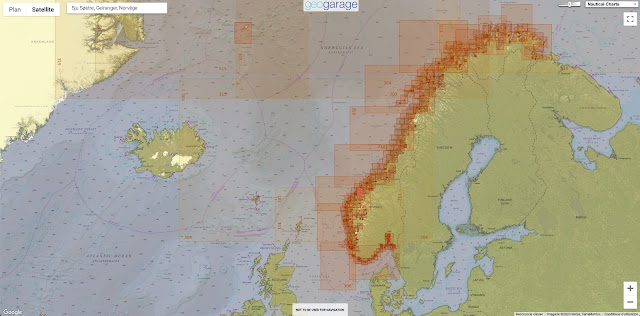

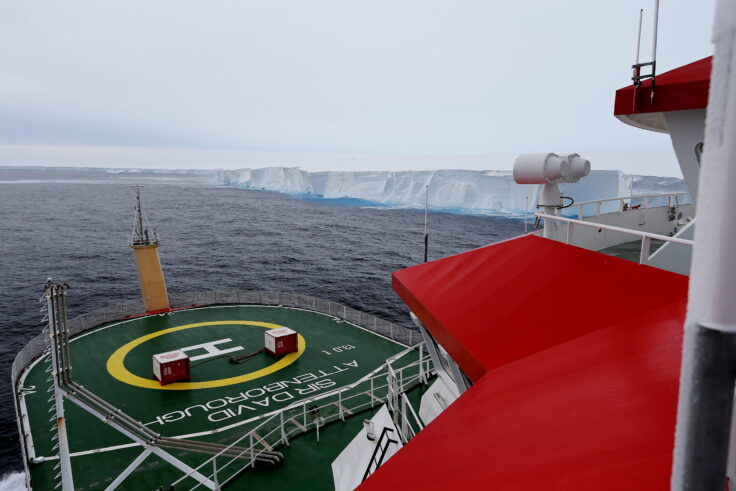 View of A23a from the deck of RRS Sir David Attenborough (Rich Turner)
View of A23a from the deck of RRS Sir David Attenborough (Rich Turner)
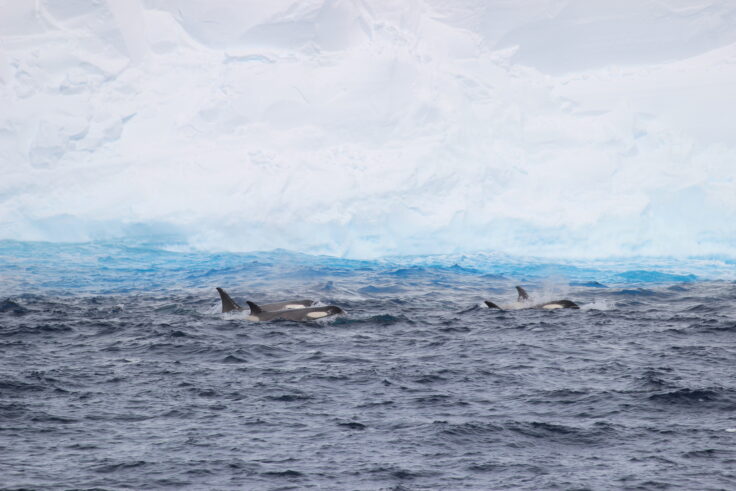 Orca in from of A23a (Liam O’Brien)
Orca in from of A23a (Liam O’Brien)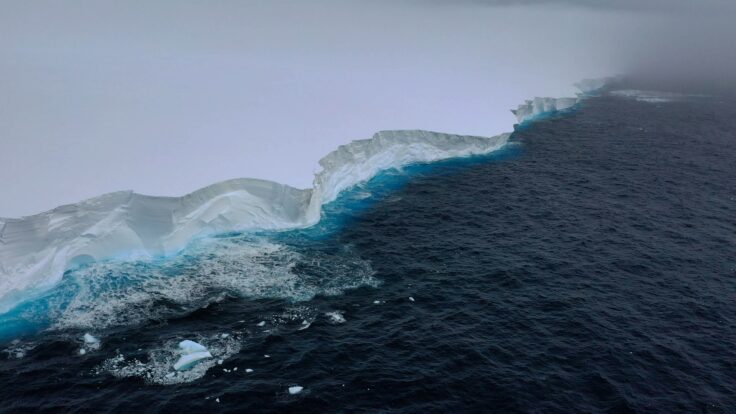 Edge of A23a, 1 December 2023 (Theresa Gossman, Matthew Gascoyne, Christopher Grey)
Edge of A23a, 1 December 2023 (Theresa Gossman, Matthew Gascoyne, Christopher Grey)